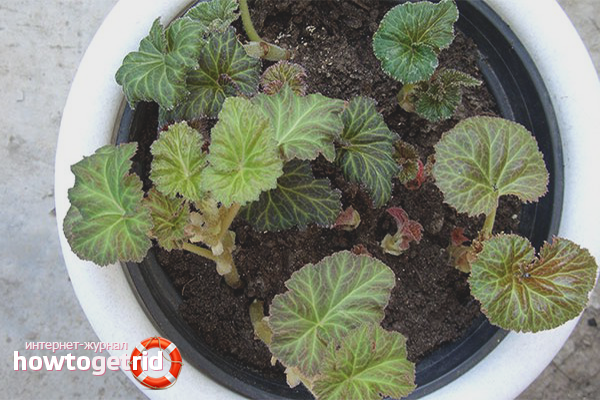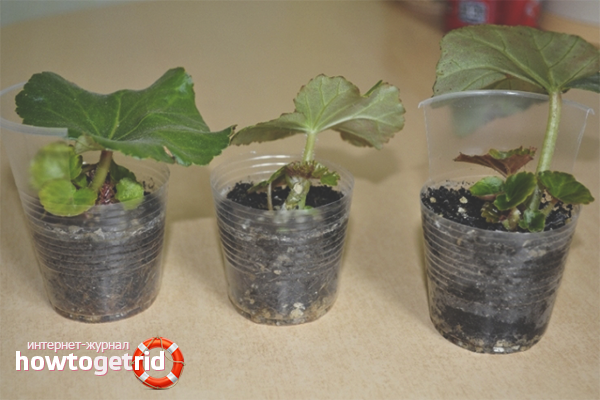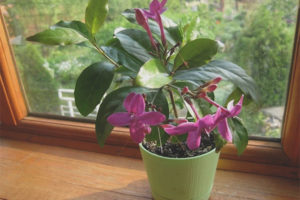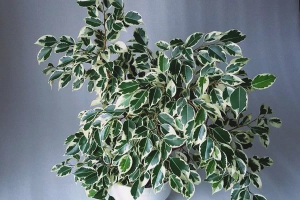The content of the article
If you are a beginner grower, begonia will be the right choice for your home green corner. This plant is not only beautiful, but also unpretentious. Everyone can learn how to care for him, and she, in turn, will bestow her sunny appearance and refreshing aroma.
To properly care for begonia, you need to familiarize yourself with the rules for planting it, watering it and find it a cozy place in the house. If you take into account all the nuances, the plant will delight you for about 4 years.
What conditions are needed for begonia
Potted begonia grows in pots. They need to be located away from heating appliances. The plant feels best of all in a corner specially designated for plants. The optimal temperature for begonia is room temperature. If summer is outside, then it should not exceed 20-22 degrees, if winter, then be below 15-16 degrees.
The air in the room should not be dry. Otherwise, it is better to turn on the humidifier. As for lighting, it should not be too bright. Sunlight is necessary for every plant, but for begonia its excess can be harmful. Moreover, protect the plant from direct rays that dry delicate leaves and petals.
How to water begonia
At different times of the year, the regime of watering begonias is different. If in winter it does not need a lot of water, and it feels good in slightly moist soil, then in summer it should be watered more often. But, nevertheless, it is necessary to ensure that the soil is not too wet, otherwise the roots may rot.
The same goes for the begonia bloom period. When the petals open, she needs more moisture than usual. But after the inflorescences have fallen, you can return to your previous drinking regime.
It is impossible to say the exact amount of watering, it depends on air quality and season. Your plant itself will make it clear when it feels comfortable, and when the watering regime should be changed.
Pay attention to the quality of the water with which you are going to irrigate begonia. Normal tap water will not work because of the high chlorine content. To reduce it, boil it, pass the water through the filter or let it settle.
Begonia should be watered no more than once a day and preferably at the same hour. In the summer it can be done every day, and in the winter 2-3 times a week. To make the plant comfortable, pour warm water. Refrain from spraying the leaves, as they may change color.
Fertilizers for begonia
An important point in the care of room begonia is top dressing. It helps to extend the life of the plant, often delight us with its flowering, saves from pests and diseases. But no less important is fertilizer for young shoots grown at home.
To choose the right fertilizing, you need to look for the inscription "for indoor plants", as well as pay attention to the composition. It should contain magnesium, potassium, calcium, phosphorus, and iron. Avoid the chlorine content. Today, gardening stores offer a wide selection of fertilizers that meet all the necessary requirements. In addition, there are special compounds designed specifically for this type of plant.
You should also pay attention to what time fertilizers are intended for. Some are introduced during the bud nucleation period, others in the second half of flowering. On average, begonia is fertilized once a month, but if necessary, you can do this more often, but with a less concentrated solution.
Begonia planting
To plant begonia at home, you need to purchase the tubers of this plant. They are sold at any gardening store. You will also need land for indoor plants, fertilizer for tubers and several pots of different diameters.
The optimal size of the tuber is slightly larger than the matchbox, you can also ask for seedlings with a broken sprout, so the begonia will begin to delight you with its flowering much earlier.
Before planting, it is necessary to prepare the pot: pour claydite on the bottom, and then soil. The tuber should be laid on the ground with the flat side down, it is from there that the roots will appear. The other side has a concave shape and the uneven surface that the kidneys form. Purchased tuber should not be sprinkled heavily with earth, otherwise it may not give shoots. It is especially important to leave the middle open so that the sprouts can easily break up.
The earth around the tuber should be moistened periodically, and the pot should be kept in a well-lit place at room temperature. When the sprout rises 5 cm from the ground, it should be half asleep. After a month, begonia will acquire the features of an “adult” plant, and may soon bloom.
The first flowers last for a long time - summer and almost all autumn, so you will have time to enjoy its unusual velvety petals. Begonia can also be planted in the garden during the warmer months, just pick the right variety and choose a place that is protected from direct sunlight.
Begonia breeding
Begonia gained well-deserved popularity among gardeners. She is not whimsical to care for and blooms the entire warm period of the year and gives beauty and joy. Propagating begonia is also quite simple.
Seed propagation
Growing begonias with seeds should begin in January. Seeds are poured on the soil and covered with glass or film. They should be irrigated with a spray gun and kept in the light, but not in the sun, and at room temperature.
A month later, the first sprouts appear, they should be transplanted into a pot with a small diameter. For all the time, while begonia grows, it needs to be transplanted 3 times. By the end of August, the first flowers will appear that will delight you all fall.
Begonia grown from seeds is prepared for wintering at the end of October. From it, you need to remove dried and yellowed leaves and rearrange in a place well lit by artificial light.
Propagation by cuttings
To get begonia cuttings, it is necessary to plant tubers called uterine at the beginning of winter. After about a month, the cuttings should be carefully disconnected, and the joints should be disinfected.
After that, they need to be slightly dried and planted in the soil. The roots of the cuttings will give about 3-4 weeks after planting, and then they can be distributed in separate pots. In this case, new tubers do not form, and care for such begonias should be the same as for seed ones.
Tuber propagation
To get several begonias from one tuber, it is necessary to divide it into 2 or 3 parts so that 1-2 sprouts remain on one piece. After that, they are planted in the soil, lightly sprinkled with earth and periodically watered. After a month, roots are formed, and the sprouts increase by 3-5 cm. Now they can be planted in small pots, and after a while they can be moved to containers with a large diameter.
Before the start of winter, tuber begonia should be trimmed at a height of about 2 cm from the ground, pull out the roots and clean well. For a crescent, the tubers need to be dried, and then placed in a box and sprinkled with peat. So begonia is stored in the cellar or refrigerator until the time of planting.
Begonia transplant
As the root system of a plant develops, the capacity in which it is planted needs to be changed.If you immediately place it in a large pot, then the part that is underground will begin to rot. Therefore, experts recommend replanting begonia at least once every two years.
Begonia transplant scheme:
- put a newspaper on the table and put a pot of plants next to it;
- take a knife and draw it along the walls, disconnecting the earth from them;
- then turn the pot over the newspaper, gently holding the begonia stem at the base;
- pull out the roots and brush them off the ground;
- lay the bottom of the new pot with expanded clay and cover it with earth with a layer of 1 cm;
- place begonia in it and gently sprinkle with soil, fixing the roots and part of the stem;
- press the ground slightly, from the edges of the walls should remain 2-3 cm.
Begonia is under stress after transplantation, so provide it with comfortable conditions. The air temperature in the room should be at 22 degrees, the lighting is not too bright, and the air is humid. Do not immediately water the plant after transplantation, wait a few days until it "takes root" in a new place. For a couple of months, it should be watered no more than once every seven days.
If you decide to arrange a small botanical garden at home or just love indoor plants, begonia should definitely appear in your apartment. This plant does not need special care, but blooms very beautifully over time. She will bring cosiness and summer mood to your house.
Video: The Basics of Successful Begonia Care













Submit